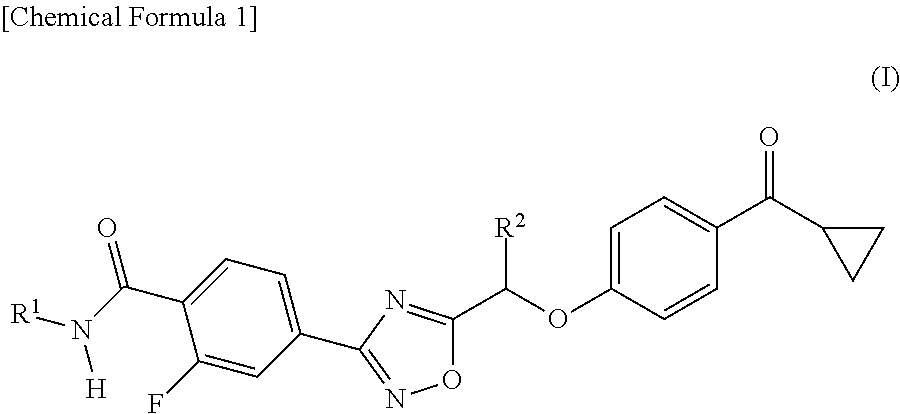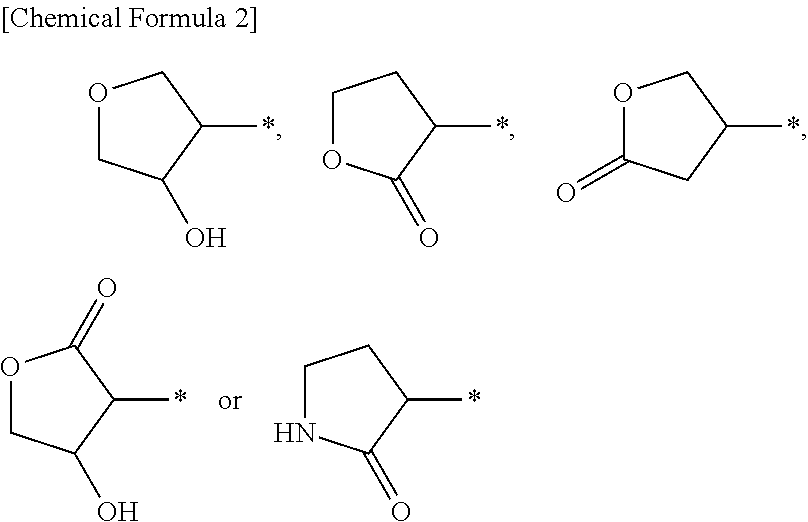N-hetero-ring-substituted amide derivative
a technology of amide derivatives and amides, applied in the field of new products, can solve problems such as side effects, hypoglycemia or secondary failure, and achieve excellent hypoglycemia effect, excellent therapeutic effect and/or prophylactic
- Summary
- Abstract
- Description
- Claims
- Application Information
AI Technical Summary
Benefits of technology
Problems solved by technology
Method used
Image
Examples
reference example 1
tert-Butyl 4-cyano-2-fluorobenzoate
[0061]
[0062]Di-tert-butyl dicarbonate (145.4 g, 666 mmol), and 4-dimethylaminopyridine (7.40 g, 60.6 mmol) were added to a tert-butyl alcohol (1000 mL)-tetrahydrofuran (500 mL) solution of 4-cyano-2-fluorobenzoate (100.0 g, 606 mmol), and the mixture was stirred at 60° C. for 3 hours. The reaction mixture was cooled to room temperature, and the insoluble material was removed by filtration through Celite. The solvent was distilled off under reduced pressure. Thus, a crude product of the title compound was obtained.
reference example 2
tert-Butyl 4-amino(hydroxyimino)methyl-2-fluorobenzoate
[0063]
[0064]A 50% aqueous solution of hydroxylamine (60 mL, 100 mmol) was added to an ethanol (100 mL)-tetrahydrofuran (50 mL) solution of the compound obtained in Reference Example 1 (11.0 g, 66.6 mmol), and the mixture was stirred at 80° C. for 2 hours. The reaction mixture was cooled to room temperature, and then the solvent was distilled off under reduced pressure. The resulting residue was washed with water, and was dried at 40° C. for 2 days under reduced pressure. Thus, the title compound (150.0 g, yield: 98%) was obtained.
[0065]1H-NMR (400 MHz, CDCl3) δ ppm:
[0066]7.89 (1H, t, J=8 Hz), 7.44 (2H, dd, J=8, 2 Hz), 7.39 (2H, dd, J=11, 2 Hz), 4.90 (2H, s), 1.60 (9H, s).
reference example 3
Cyclopropyl(4-hydroxyphenyl)methanone
[0067]
[0068]4-Chloropropyl(4-hydroxyphenyl)methanone (25.1 g, 127 mmol) was added to a 2 N aqueous solution of sodium hydroxide (283 mL, 566 mmol) in several portions under ice cooling. The reaction mixture was allowed to warm up to room temperature, and was stirred for 6 hours, and then dilute sulfuric acid (1.8 N) was added to the reaction mixture under ice cooling until a pH value of 2 was obtained. The reaction mixture was subjected to extraction twice with ethyl acetate. The organic layer thus obtained was washed with water and brine, and then was dried over anhydrous magnesium sulfate. The solvent was distilled off under reduced pressure, and the resulting residue was purified by silica gel column chromatography (hexane:ethyl acetate=4:1→2:1, v / v) to give the title compound (17.7 g, yield: 86%).
[0069]1H-NMR (400 MHz, CDCl3) δ ppm:
[0070]7.99-7.96 (2H, m), 6.93-6.89 (2H, m), 6.16 (1H, s), 2.67-2.61 (1H, m), 1.28-1.18 (2H, m), 1.09-0.97 (2H, m...
PUM
| Property | Measurement | Unit |
|---|---|---|
| Therapeutic | aaaaa | aaaaa |
Abstract
Description
Claims
Application Information
 Login to View More
Login to View More - R&D
- Intellectual Property
- Life Sciences
- Materials
- Tech Scout
- Unparalleled Data Quality
- Higher Quality Content
- 60% Fewer Hallucinations
Browse by: Latest US Patents, China's latest patents, Technical Efficacy Thesaurus, Application Domain, Technology Topic, Popular Technical Reports.
© 2025 PatSnap. All rights reserved.Legal|Privacy policy|Modern Slavery Act Transparency Statement|Sitemap|About US| Contact US: help@patsnap.com



